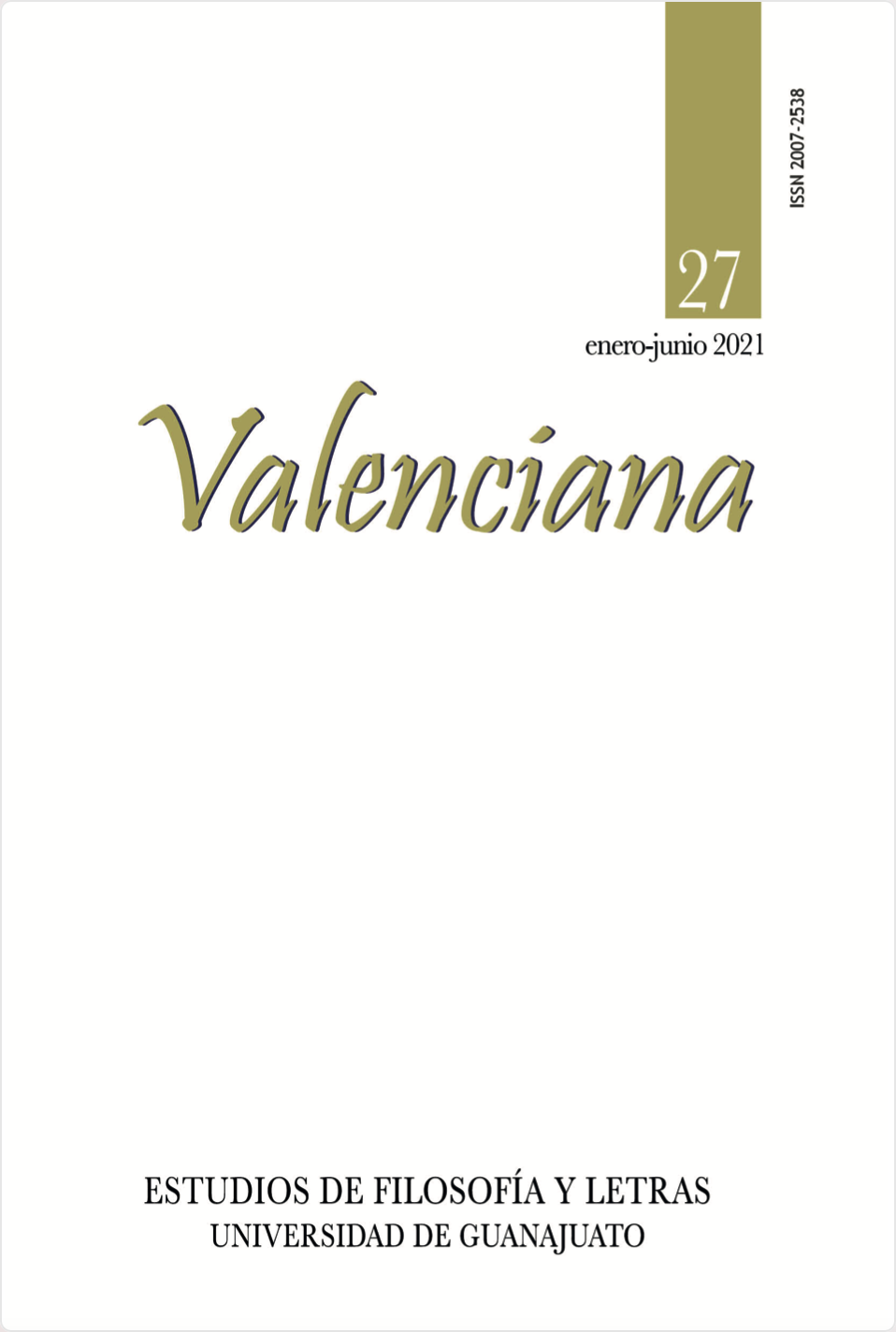The Fecundity of the Void
DOI:
https://doi.org/10.15174/rv.v13i27.493Abstract
This article is about the possibilities of existential emptiness, focusing on its scope, its alternatives and its contributions to the human being. There are, therefore, seven characteristics of the void that it fills: its source is detachment, it leads to the expulsion of fears, anguishes and hatreds, it arises from acceptance, it encourages the liberation of alienations, it overcomes univocity and allows the distinction between our opinion and the truth. The emptiness that it fills directs the individual to the recognition of his own limits and to the intuition of the Order that is usually alien to the intellection.
References
Arnau, Juan, 2005, La palabra frente al vacío. La filosofía de Nagarjuna, Ciudad de México, FCE.
Bourdieu, Pierre, 2014, Intelectuales, política y poder, Buenos Aires, Eudeba
Camus, Albert, 2015, El hombre rebelde, Madrid, Alianza.
Cioran, Emil, 2012, De lágrimas y de santos, Ciudad de México, Tusquets.
Mainländer, Philipp, 2013, Filosofía de la redención, Trad. S. Baquedano, Santiago, FCE.
S/A, 2009, Bhagavad Gita, Ed. Consuelo Martin. Madrid, Trotta.
Séneca, 1996, Consolaciones a Marcia, Madrid, Gredos.
Published
How to Cite
Issue
Section
License
Author(s) who publish in this journal do accept the next conditions:
According to copyright regulations, Valenciana does recognize and respect the authors’ moral right, as well as the right of property, which will be assigned to the journal for its diffusion in open access.
Valenciana does not charge authors for the submission, editorial process or publication in the journal.
All texts published and distributed by Valenciana (without exception) are supported by the license Creative Commons Attribution-NonCommercial 4.0 International (CC BY-NC 4.0), which allows third parties to use the publication as long as they mention the author and the first publication.
Authors can make other independent and additional contractual agreements for the non-exclusive use of his article published in Valenciana (e.g. including it in an institutional repository or in printed/electronic media), as long as it is explicitly clarified that the article was published for the first time in this journal.
For these purposes, authors must sign and send the letter of submission and copyright transfer form in a PDF file to this email address: revistavalenciana@gmail.com
This journal is under a license by Creative Commons Atribución-NoComercial-SinDerivadas 4.0 Internacional (CC BY-NC-ND 4.0)).











